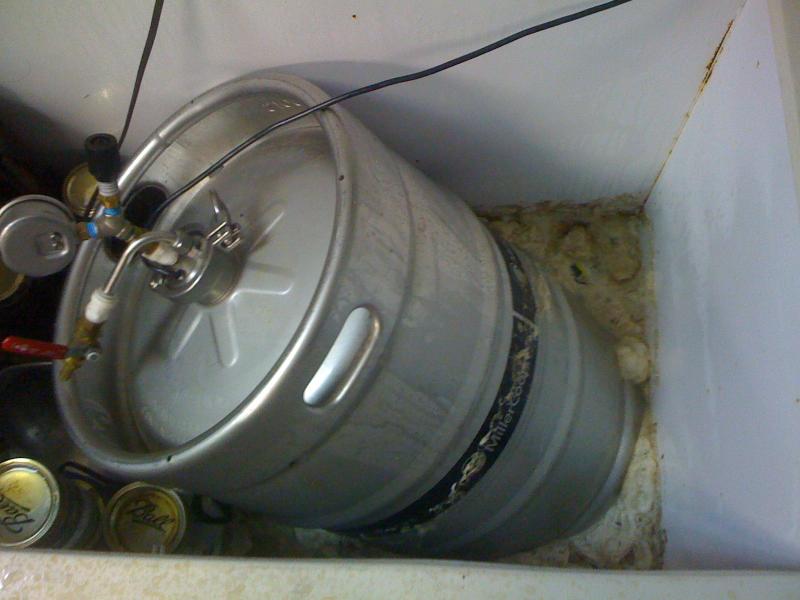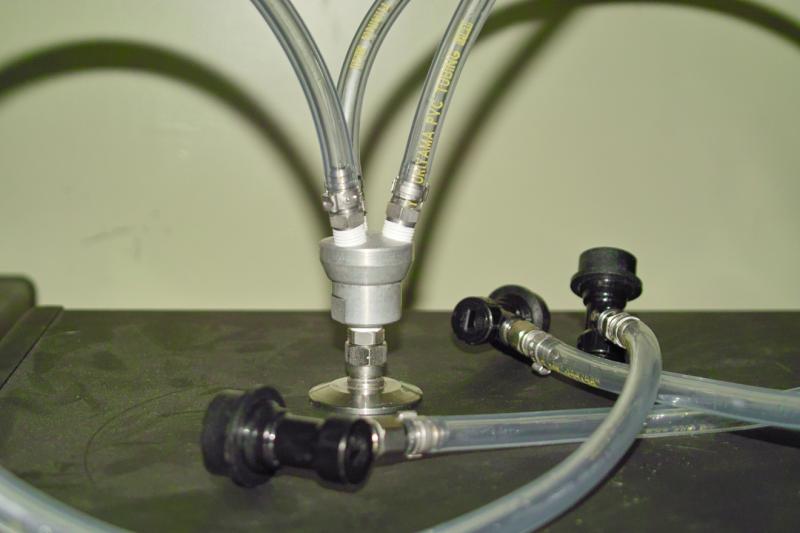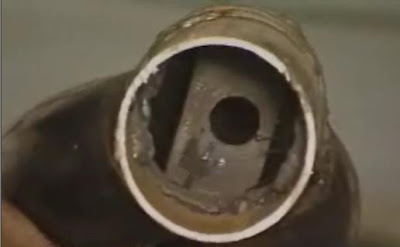When you say, "open the relief valve on the cornies" do you mean a spunding valve? Or are you just saying that once the transfer starts I can release the pressure entirely in the destination kegs?
I'm thinking that I may not need spund valves to counter pressure fill my kegs. I suppose I can just hook the cornies up to my regulator set at 7 psi, and then set my sanke to 9 psi with a different co2 tank and regulator, which I do have.
Would this work? I have sanke spund valve and one corny spund valve. I'd like to use the "tee" filling idea posted above.
I thought I'd report on my 3 kegs at once in tandem Corny filling from a Sanke fermenter method since the topic has come up. I alluded to it about 3 pages ago. I've tested it a couple times with water, flat beer, and closed system carb'd beer. It is working well so far. I should probably do a new thread with this, but since it came up...
I thought of this and kind of hoped it would work since it didn't seem anyone else had done it on this forum (having asked a couple times). After going thru with it, I did notice that several commercial breweries do this. Notably, in my area, Cooperstown Brewery. They call it the "Octopus" and fill 7 kegs at a time right from the brite tank.
Anyhoo, the concept is that if you have your 3 kegs pressurized exactly the same, you can counterpressure fill at the exact same pace and end up with (near) equal volume transfer per keg. I do this by way of two items-
On the liquid side:
3 way pneumatic manifold (~$8 McMaster) that splits the input three ways at the same exact angle. I went with this instead of a cross because I figured two out of the three feeds would be at 90 degree angles and the third would be straight and I'd end up with unequal transfers (I'd love it if a fluid dynamicist would prove me wrong, I dunno). If you are trying to do just 2 kegs from a Sanke like the previous poster, I think a tee would be great.
On the gas side:
3 way gas manifold that has NO check valves in the shutoffs (since it is operating in the reverse direction it would in a kegerator). That's terminated with a corny post - so I could hop-scotch my spunding valve to and fro.
Technique:
1) Purge the 3 cornys at once and send out any remaining Starsan and pressurize to ~8 PSI.
2) Put the spunding valve on the gas manifold and calibrate to the kegs.
3) Hook up 'The Octopus' to the fermenter- without hooking up the three liquid ball locks (they are acting as a shut-off).
4) Hook up the gas to the fermenter and pressurize to the same PSI.
5) Put disconnects on the liquid in of each keg. Nothing happens since they are both at ~8 PSI.
6) Crank up the CO2 a couple PSI and watch the fun start. Alternately, turn down the spunding valve. Still not sure which is better, if one is.
7) Watch the frost line and drink a beer. Shut off CO2 when fermenter is empty.
Generally, I get about a quart margin-of-error of being exactly the same volume per keg. And then I have equal headroom in the kegs to force carb (which I can do 3 at once with the same manifold) or whatever I want to do. Also, I have tested this just filling two kegs and it works the same. Since the ball lock connectors are like shutoffs, it works just as well with a pair (gas/liq) just hangin out.
The part number for the pneumatic fitting from McMaster is: 5465K71. Unfortunately it's Aluminum. Stainless manifolds like this are real pricy.
Here are a few pics. The first is the liquid side (which is terminated with tri-clamp). I can do a video if anyone's interested. I'll be transferring in couple days- cold crashing right now.








